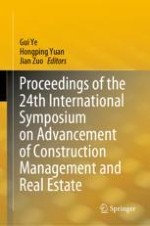2021 | OriginalPaper | Chapter
Identifying Influential Factors of the Development of Construction Waste Recycling Industry in China
Authors : Jingru Li, Yun Yao, Han Liu
Published in: Proceedings of the 24th International Symposium on Advancement of Construction Management and Real Estate
Publisher: Springer Singapore
Activate our intelligent search to find suitable subject content or patents.
Select sections of text to find matching patents with Artificial Intelligence. powered by
Select sections of text to find additional relevant content using AI-assisted search. powered by
